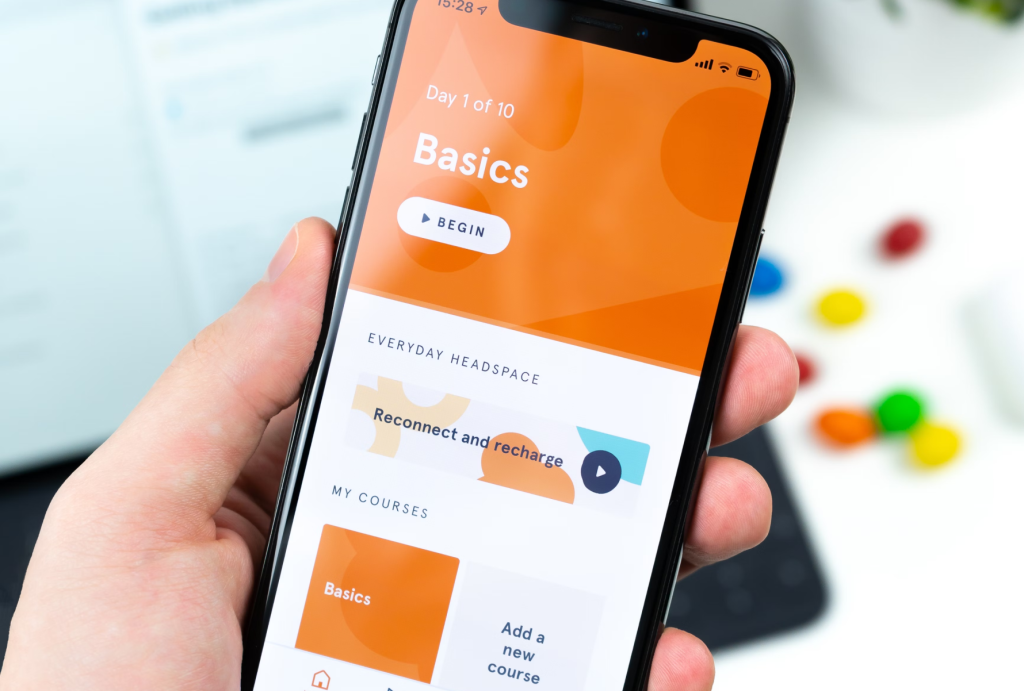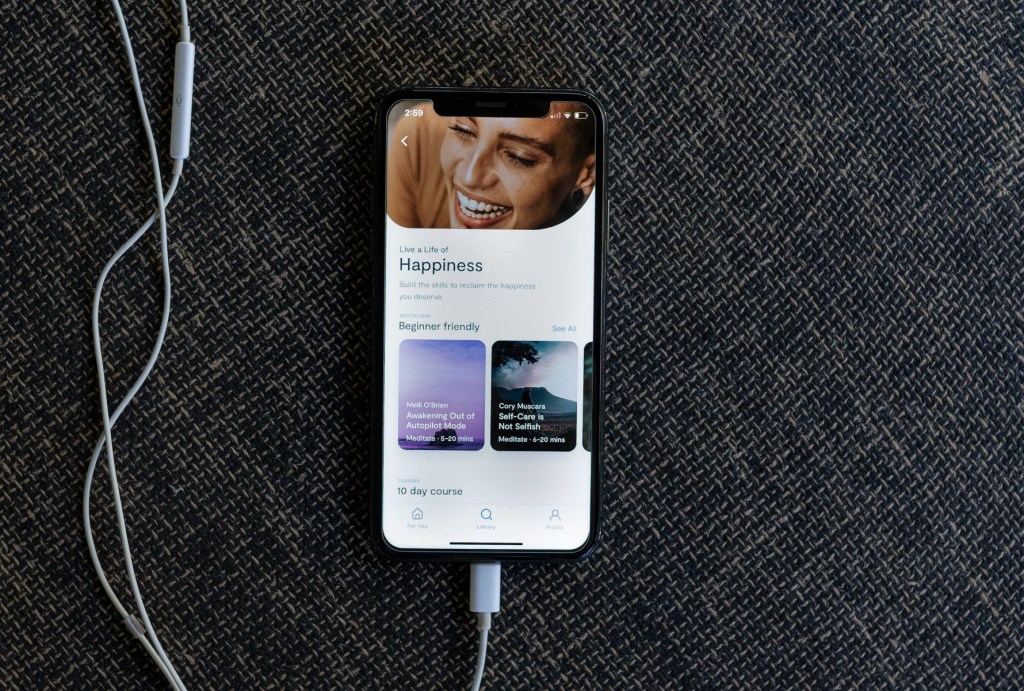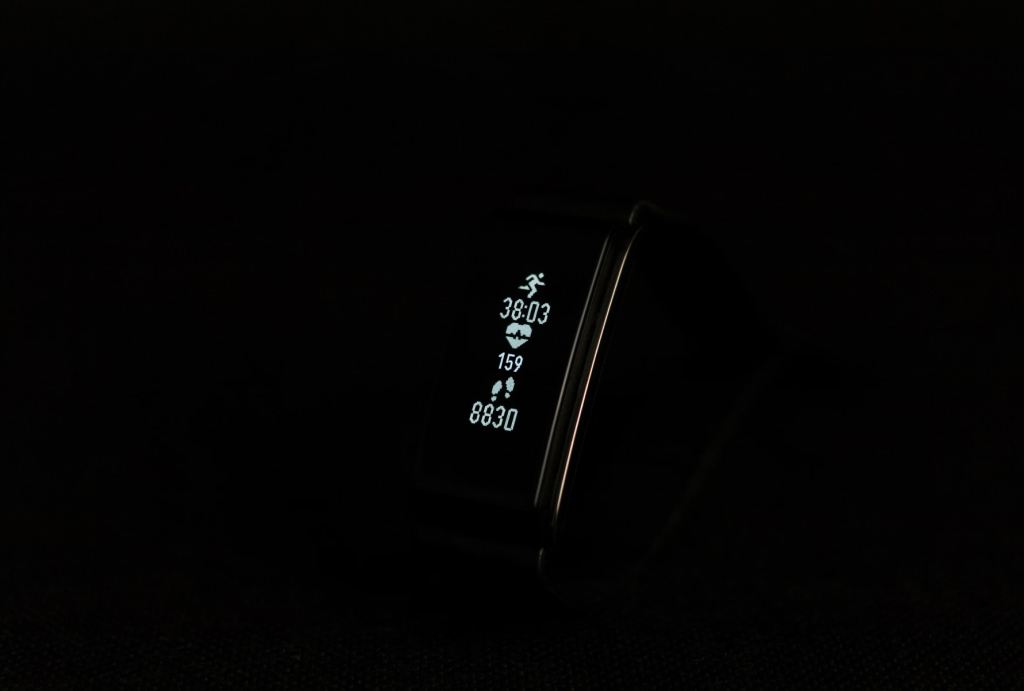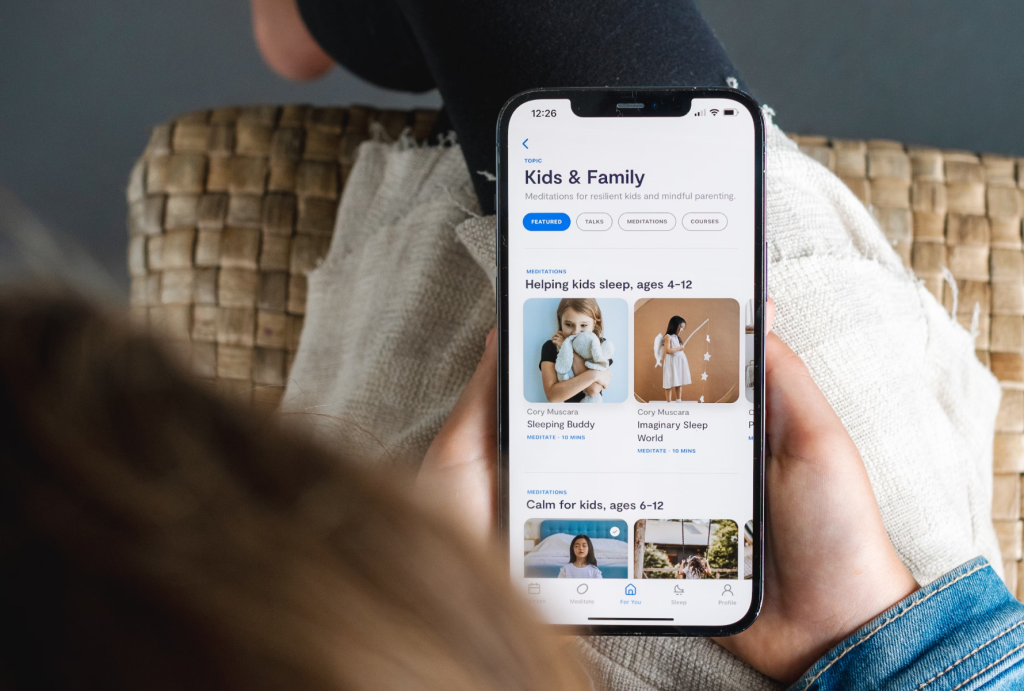The health and wellness app market is rapidly expanding, driven by a growing global focus on mental and physical well-being. In 2023, the revenue for this software reached $700 million globally, and by 2028, it is estimated to grow to $2.6 billion.
The fitness app market is also experiencing notable expansion. In 2023, it was valued at approximately $1 billion, with forecasts suggesting it could surpass $3 billion by 2030. Such a lift, with a projected compound annual growth rate (CAGR) of 15%, underscores the increasing importance of fitness and mental health in everyday life.
It’s safe to say that significant opportunities are available in wellness app development, as more users turn to digital solutions to manage their health and well-being.
Understanding the Core Features: What a Wellness App Must Have

In wellness app development, it’s essential to begin with a clear understanding of the core features that will define the app’s success. These features should focus on both functionality and user experience. Here’s what to consider:
User-Centric Design
A successful wellness app requires a user-centric design. The app should be intuitive and user-friendly, catering to a wide range of users, from tech-savvy individuals to those less familiar with digital platforms. A clean, accessible interface is key to keeping users engaged and returning regularly.
- Personalized experience: Personalization is a necessity in wellness apps. Users expect the app to address their specific needs, goals, and preferences, which could include personalized workout plans or tailored health tips based on user data.
- User feedback loops: Encouraging users to provide feedback on their experience can drive iterative design processes, leading to regular updates that significantly enhance user engagement.
Integration with Wearables and Health Data
Integrating with wearables and health data APIs enhances the user experience by providing data for more personalized and accurate wellness recommendations.
- Technical challenges: Integrating with devices like Fitbit or Apple Watch can be technically complex. Each device may have its own set of APIs, data formats, and synchronization protocols. Effective API integration for wellness apps guarantees smooth synchronization.
- Privacy concerns: Managing health data requires strict privacy measures. Users need assurance that their sensitive health information is secure. Compliance with regulations such as HIPAA is fundamental. Building a wellness app with robust encryption measures and secure data storage is a necessary step.
- Regulatory compliance: Beyond HIPAA, other local regulations may govern health data depending on the target market. Adhering to these regulations in health and wellness app development from the start prevents legal issues later.
AI and Data Analytics
AI in wellness apps is playing an increasingly important role elevating a simple tracking tool to a comprehensive wellness companion.
- Personalized recommendations: AI can analyze user data to provide personalized wellness recommendations, such as suggesting the next workout or dietary changes. These AI-driven insights greatly enhance user engagement and effectiveness.
- Data analysis and trends: AI can identify patterns in user behavior and health metrics, predicting trends and potential health issues. Proactive approach contributes to maintaining health and well-being.
- Tech considerations: Implementing AI in a wellness app requires a robust technology stack capable of handling large datasets and delivering real-time insights. Platforms like TensorFlow or PyTorch, paired with cloud services for data storage and processing, offer scalability and ease of integration.
Social and Community Features
Building a sense of community within a wellness app can lead to higher user retention and satisfaction. Proper user engagement can be enhanced by allowing people to connect with others who share similar goals.
- Group activities and support: Features that enable users to join groups based on their interests or wellness goals, such as weight loss or mental well-being, can be highly motivating.
- Peer support and messaging: In-app messaging and support features allow users to interact with each other, providing peer support to help them stay committed to their wellness goals.
Content Library and Educational Resources
Providing access to a rich library of content can position a wellness app as a comprehensive resource for all things wellness, adding value and improving retention rate.
- Articles and videos: Offering a diverse range of educational content, including articles, how-to guides, and videos on fitness, nutrition, mental health, and more, can meet varied user interests and goals.
- Expert webinars and workshops: Hosting webinars or workshops with wellness experts, fitness trainers, or dietitians, either live or pre-recorded, provides users with access to expert advice directly within the app.
Real-Time Support and Coaching
Real-time support and coaching features also have significant value, especially for users seeking more personalized guidance.
- In-app coaching: Allowing users to connect with wellness coaches through a mobile app for personalized advice and support, such as one-on-one sessions, live chat, or virtual consultations, is particularly important.
- Automated AI Support: An AI-powered support bot can provide instant answers or quick advice, addressing common wellness questions or suggesting actions based on current data.
Multi-Platform Synchronization
Users today expect seamless experiences across multiple devices. Ensuring that a wellness app syncs data across various platforms is vital.
- Cross-platform sync: Ensuring that data syncs across smartphones and tablets, allows users to access their wellness data anytime, anywhere.
- Wearable integration: Deep synchronization with multiple devices allows users to view their health data, whether captured on their smartphone or wearable device, without manual intervention.
Building a Scalable Backend

A scalable backend architecture is a core component of wellness app development. A well-designed backend ensures the app can handle increasing demands while maintaining high performance and security.
Each backend technology has its strengths and is suited to different types of applications.
- ASP.NET: ASP.NET is a robust framework for building scalable and secure applications that can handle a large volume of transactions. Seamless integration with Azure’s cloud services makes it suitable for apps expected to scale rapidly.
- Node.js: Known for its speed and scalability, Node.js is an excellent choice for building a wellness app that handles a lot of user interactions. Its non-blocking architecture efficiently processes multiple requests simultaneously.
- Django: Django, a high-level Python framework, emphasizes rapid development and clean, pragmatic design. It’s ideal for startups looking to develop an MVP. Django’s built-in security features, including protection against SQL injection and cross-site scripting, are particularly valuable in health and wellness app development.
Cloud Services and Infrastructure
Selecting the right cloud services is important for effectively hosting and scaling a wellness app. Cloud services provide various tools to help manage the backend, ensuring the app remains responsive and available even during peak usage times.
- AWS (Amazon Web Services): AWS is a popular choice for its extensive range of services, including load balancing, auto-scaling, and serverless architecture. These features allow to automatically adjust resources based on user demand, ensuring consistent performance.
- Azure: Microsoft Azure offers a robust cloud infrastructure with seamless integration for ASP.NET applications. Azure’s auto-scaling and load balancing features help maintain performance while reducing operational costs, making it a strong choice for apps that need to comply with industry standards like.
- Google Cloud: Google Cloud Platform (GCP) provides powerful tools for data analytics and machine learning, making it an excellent option for wellness apps that leverage AI.
- Load balancing and auto-scaling: To effectively handle peak loads, a wellness app must dynamically adjust its resources.Auto-scaling allows the app to automatically adjust its computing resources based on real-time demand, ensuring cost-efficiency and performance.
- Serverless architecture: A serverless approach is particularly beneficial for startups. With serverless architecture, there’s no need to manage the underlying infrastructure, as the cloud provider automatically handles scaling, patching, and load balancing. This allows the focus to remain on MVP development rather than infrastructure management.
Data Security and Compliance
Data security is the backbone of health and wellness app development. Users trust the app with sensitive health information, and protecting that data with the highest security standards is a must.
- Encryption standards: Advanced encryption algorithms like AES-256 ensure that health data is protected from unauthorized access. Secure communication protocols such as HTTPS and TLS should be used to protect data during transmission.
- Regular security audits: Regular security audits help identify vulnerabilities and ensure compliance with regulations like HIPAA or GDPR. These audits should include penetration testing, code reviews, and vulnerability scanning. A proactive approach to security helps safeguard user data and build trust.
- Compliance with Regulations: A wellness app may need to comply with other regional regulations. Ensuring compliance involves implementing strict data protection measures, maintaining transparency about data usage, and providing options for data access and deletion.
By carefully selecting wellness app tech implementation strategies, including the right technology stack, cloud infrastructure, and stringent security measures, a backend can be built to scale with the app’s growth while ensuring robust performance and security.
Ensuring Seamless Integration with Third-Party APIs
In wellness app development, integrating with third-party APIs is often essential to enhance functionality, improve user experience, and expand the app’s capabilities.
API Management
Integrating third-party APIs into a wellness app can unlock powerful features, but it requires careful management to ensure consistent performance and reliability. Here are some best practices:
- Handling rate limits: Many third-party APIs impose rate limits to prevent overuse of their services. To manage these limits, strategies like request batching, caching frequently accessed data, and optimizing API calls should be implemented. This ensures the app remains responsive without exceeding usage caps. For example, when integrating with health data APIs or wearable devices, batching requests can manage the load efficiently while adhering to the API’s rate limits.
- Ensuring data consistency: Data consistency is essential for health-related information. This may involve automated processes that validate data integrity after each API call, ensuring that users always see the most accurate information.
- Error management: APIs are prone to errors, such as network failures, timeouts, or unexpected responses. Robust error-handling mechanisms are essential to maintaining a smooth user experience. This can include retry logic with exponential backoff, graceful degradation where the app continues to function with limited features, and user-friendly error messages that guide users on what to do next.
Real-time data synchronization
Real-time data is increasingly important, especially for wellness apps relying on continuous health monitoring, activity tracking, or providing instant feedback. Achieving seamless data synchronization across multiple devices and platforms can be challenging. Here are some solutions:
- WebSockets for real-time communication: WebSockets provide a full-duplex communication channel over a single, long-lived connection, making them ideal for real-time data exchange. By using WebSockets, a wellness app can receive instant updates from third-party APIs. This is particularly useful for tracking health metrics or syncing workout data as it’s generated.
- Push notifications: Push notifications keep users informed about important events, such as completing a workout session or achieving a health milestone. They are also useful for alerting users to real-time changes in their health data or reminding them to perform certain wellness activities.
- Background syncing mechanisms: Background syncing is essential for maintaining data consistency when the app is not in the foreground. Implementing background sync allows the app to fetch the latest data and synchronize it across devices, ensuring users always have access to current information, even if they haven’t actively opened the app. Technologies like background fetch (on iOS) and WorkManager (on Android) can be used to achieve this.
User Engagement and Retention through Gamification

Enhancing user engagement and retention is vital for the success of any project, especially in the competitive field of wellness app development. Integrating gamification elements and effective user communication strategies can significantly boost user interaction and loyalty. This section provides a technical guide on implementing these features using various SDKs and frameworks.
Implementing Gamification Elements
Incorporating gamification in wellness apps transforms routine health activities into engaging and motivating experiences. Elements such as badges, leaderboards, and challenges encourage users to stay committed to their wellness goals by introducing a sense of achievement and competition.
Benefits of gamification in wellness Apps
- Increased user engagement: Gamified features make wellness activities more enjoyable, encouraging users to interact with the app more frequently.
- Improved user retention: Reward systems and challenges motivate users to return regularly, fostering long-term commitment.
- Enhanced motivation: Visual representations of progress and achievements boost user morale and encourage continuous improvement.
- Social interaction: Leaderboards and shared challenges promote community building and healthy competition among users.
Technical Implementation of Gamification Features
Implementing gamification requires careful planning and the right selection of technologies and frameworks to ensure seamless integration.
Badges and Achievement Systems
Badges serve as visual rewards that acknowledge user accomplishments, encouraging continued engagement.
Implementation Steps:
- Define achievement criteria: Outline specific actions or milestones that warrant badge rewards (e.g., completing a week of daily workouts, reaching a hydration goal).
- Design badge assets: Create visually appealing badge graphics that align with the app’s design language.
- Set up backend infrastructure: Use databases (e.g., Firebase Realtime Database, MongoDB) to track user progress and badge status. Implement APIs to manage badge assignments and retrievals.
- Integrate with frontend: Update the user interface to display earned badges prominently within the app. Frameworks like React Native or Flutter can be used for cross-platform development, ensuring consistency across iOS and Android devices.
- Utilize gamification SDKs: Incorporate SDKs such as BadgeUp or Playlyfe, which offer ready-made solutions for achievement tracking and badge management. These SDKs provide APIs for creating, assigning, and displaying badges, reducing development time and effort.
Testing, Deployment, and Maintenance

Ensuring that a wellness app remains reliable and user-friendly throughout its lifecycle requires a well-structured approach to testing, deployment, and ongoing maintenance. Here’s a detailed guide on how to manage these critical aspects effectively.
Automated Testing and CI/CD Pipelines
Setting up automated testing and continuous integration/continuous deployment (CI/CD) pipelines is crucial for maintaining a high-quality wellness app. These practices help reduce bugs, streamline updates, and ensure that new features are seamlessly integrated.
Automated Testing
- Unit testing: Unit tests focus on individual components of the app, ensuring that each part functions correctly in isolation. Frameworks like JUnit (for Java), Mocha (for JavaScript), or XCTest (for Swift) can be used to implement unit tests, helping to catch bugs early in the development process.
- Integration testing: Integration tests ensure that different modules of the app work together as expected. Tools like Selenium, Appium, or Postman can automate these tests, verifying that APIs, databases, and other services integrate smoothly.
- UI testing: UI tests simulate user interactions with the app, verifying that the user interface behaves correctly across various devices and operating systems. Tools like TestCafe, Selenium WebDriver, or Espresso (for Android) can automate UI testing, ensuring a consistent user experience.
CI/CD Pipelines
- Continuous Integration (CI): CI automates the process of integrating code changes into the main codebase. Tools like Jenkins, Travis CI, or GitLab CI automatically run tests every time code is committed, ensuring that new code doesn’t introduce bugs or break existing features.
- Continuous Deployment (CD): CD automates the deployment of the app to staging or production environments after successful testing. By using CD tools like CircleCI, AWS CodePipeline, or Azure DevOps, developers can ensure that updates are deployed quickly and reliably. This process reduces the time between development and user feedback, allowing for more frequent updates and improvements.
Implementing automated testing and CI/CD pipelines increases the reliability of the wellness app and accelerates the development cycle, allowing for quicker iterations and faster delivery of new features.
Ongoing Maintenance and Feature Updates

Maintaining a wellness app post-launch is just as important as the initial development. Continuous monitoring, regular updates, and responsiveness to user feedback are key to keeping the app relevant and effective.
Monitoring performance
- Real-time monitoring: Using tools like New Relic, Datadog, or Firebase for performance monitoring allows developers to monitor critical metrics such as load times, error rates, and user interactions, helping to quickly identify and address issues.
- Crash reporting: Implementing crash reporting tools like Sentry or Firebase helps track and diagnose app crashes. This data is crucial for understanding the root causes of crashes and implementing fixes to improve stability.
Rolling out updates
- User feedback integration: Regular updates should be guided by user feedback, which can be collected through in-app surveys, app store reviews, and direct communication channels. Prioritizing updates based on user needs helps keep the app aligned with user expectations.
- Minimizing downtime: To minimize disruption during updates, consider using blue-green deployment strategies or rolling updates. Blue-green deployment involves running two identical environments, with one serving users while the other is updated. Once the update is complete, traffic is switched to the updated environment with minimal downtime.
- Security and compliance updates: Regularly updating security protocols and ensuring compliance with regulations like HIPAA for wellness apps involves patching vulnerabilities, updating encryption standards, and performing regular security audits.
Case Studies: Successful Wellness Apps

Examining successful apps offers valuable insights into effective wellness app development. Here are a few examples that showcase different approaches and the technical solutions they employed.
MyFitnessPal is renowned for its extensive food database and seamless integration with various fitness devices like Fitbit and Apple Health. Built using Node.js and MongoDB, the app handles real-time data processing and offers a flexible, scalable backend. Its use of React Native ensures a smooth, cross-platform user experience. MyFitnessPal’s success highlights the importance of API integration and scalable architecture in creating a user-friendly wellness app.
Headspace has become a leader in meditation and mindfulness by leveraging AWS for scalability and Python with Django for rapid and secure development. The app uses AI to personalize meditation sessions and employs push notifications effectively to boost user engagement. Headspace’s approach demonstrates how cloud services and AI can enhance user experience and retention in wellness apps.
Fitbit, initially a wearable device, has expanded into a comprehensive wellness platform. The app uses Google Cloud for real-time data processing and integrates gamification elements like badges and challenges to keep users motivated. Fitbit’s tech stack includes Java, Kotlin, and Swift for high performance across Android and iOS. This app exemplifies the power of integrating wearables with wellness apps and real-time data processing.
Noom takes a unique, psychology-based approach to weight loss, using Node.js and PostgreSQL for fast data retrieval and robust management. The app features AI-driven personalized plans and real-time coaching. Noom’s success underscores the value of personalized experiences and real-time support in creating a compelling wellness app.
How to Hire Health and Wellness App Developers
In today’s expanding digital health market, choosing the right developers for health and wellness app development can significantly impact a project’s success. Deciding between freelancers or a software development agency is a key consideration.
While freelancers might offer lower costs, there are risks such as potential issues with accountability and reliability. For short-term tasks, freelancers might suffice, but developing a comprehensive wellness app typically requires the expertise and stability of a professional company.
When selecting a development partner, consider factors such as experience, technical expertise, and past project success. Platforms like GoodFirms and Clutch offer reviews and rankings that can guide the decision.
Key points to evaluate include:
- Experience in wellness app development: Look for a team with a proven track record in the wellness app sector.
- Tech stack proficiency: Ensure the team is skilled in the latest technologies like AI and real-time data processing.
- Portfolio of successful projects: Reviewing the company’s portfolio can provide insights into their capabilities and previous successes.
- Flexible engagement models: A reliable partner should offer engagement models that fit the project’s needs, whether it’s a fixed price, time and materials, or a dedicated team approach.
Cost is important, but it’s also crucial to consider the value provided. Requesting a detailed estimate will clarify how the costs align with project requirements. Quality development is an investment, and selecting the right partner can make a significant difference in the outcome of a wellness app.
Wellness App Development Cost
The cost of wellness app development varies based on several factors:
- Desired functionality: More complex features increase the cost.
- Tech stack: The technologies used affect both the development time and expenses.
- Integrations: Third-party integrations, like wearables or health data platforms, add to the complexity and cost.
- Team size and composition: Larger, more specialized teams may be required for complex projects, impacting cost.
- Project time frames: Expedited timelines generally lead to higher costs.
Development costs can start at around $40K for a basic version or MVP, with more advanced features requiring a larger investment. bART Solutions team will provide a detailed estimate tailored to specific project needs, offering clarity on the investment required. Drop us a line to schedule a call.
Choosing the right development partner is key to the success of a wellness app. With industry expertise, a strong technical foundation, and a focus on delivering quality solutions, bART Solutions is a strong option for wellness app development projects.
